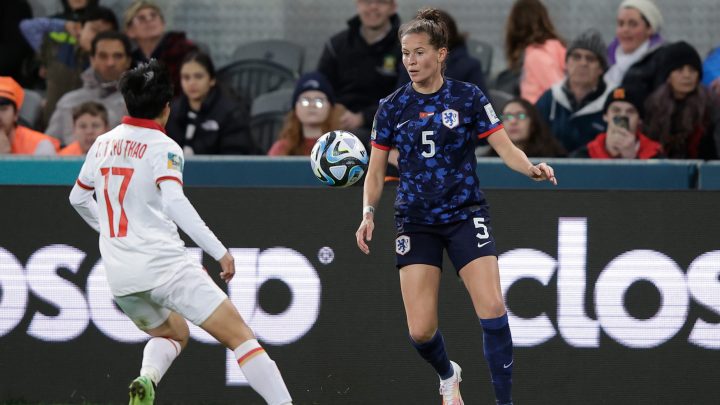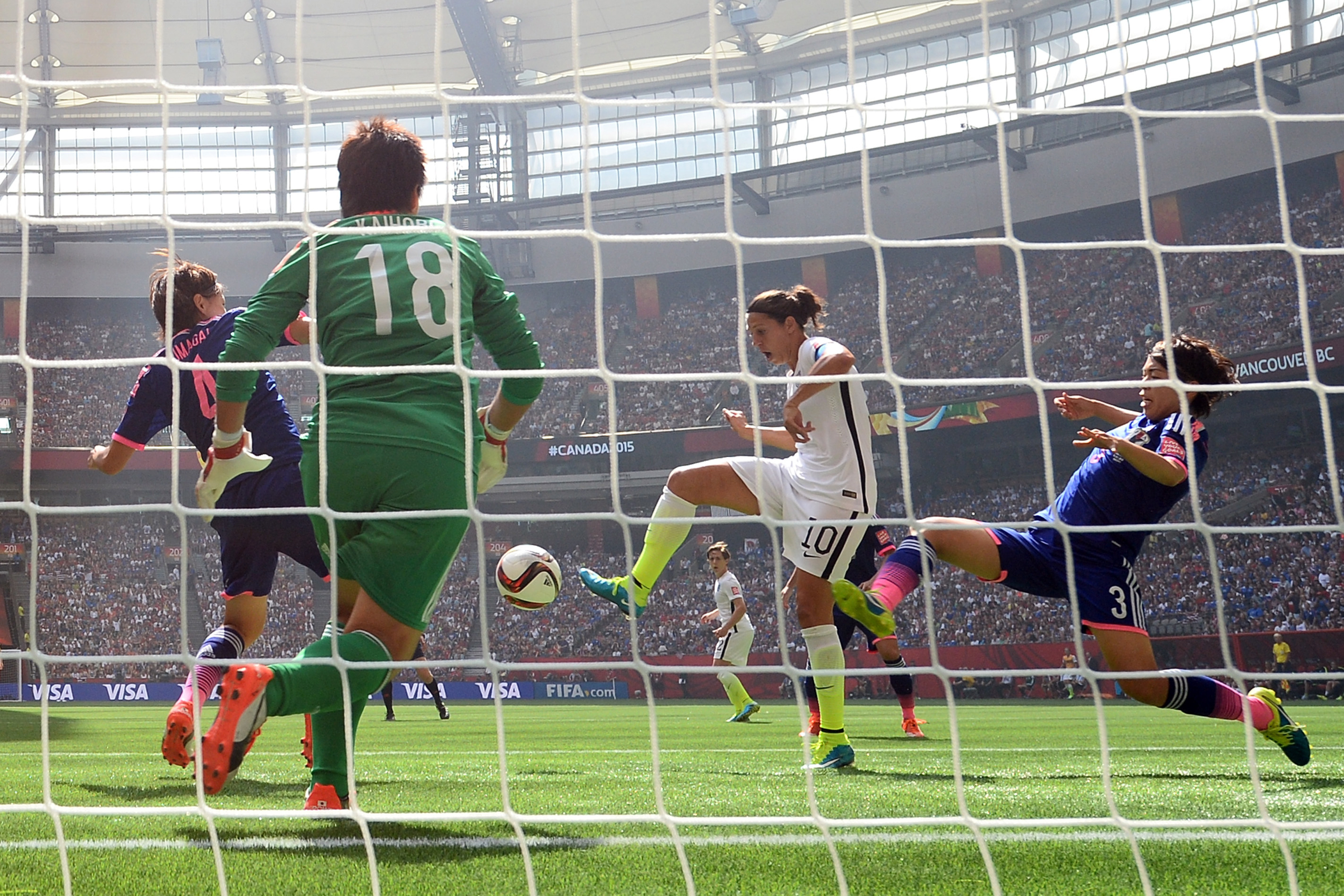
Women’s soccer is growing globally. U.S. college sports are part of that.
Women’s soccer is growing globally. U.S. college sports are part of that.

The final match of the 2023 Women’s World Cup is set to kick off on Sunday. Spain will play England to crown a champion.
But more broadly, this year’s tournament has already been a success story for the growth of the women’s game at a global level. And, interestingly enough, the business of college sports here in the United States is a big part of the reason why. That’s according to Victoria Jackson, a sports historian and professor of history at Arizona State University. She spoke with “Marketplace Morning Report” host Sabri Ben-Achour and the following is an edited transcript of their conversation.
Sabri Ben-Achour: So the U.S. women’s national soccer team is really strong, best in the world for a long time, despite … I know they had a disappointing exit from the World Cup this year. But we don’t need to talk about that. But one reason the U.S. could produce such a strong team is that it has a strong college sports system for women in soccer. Can you put the U.S. system into context? How strong is our system, as systems go?
Victoria Jackson: We have a development ecosystem that is unparalleled, unmatched. There’s nothing like it that exists anywhere else. This is a multibillion dollar sports industry run by higher education. It’s also something that is for both men and women athletes. And it’s across all sports. And the infrastructure that we have in this system is best in world, so the world athletes come here, too.
Ben-Achour: How did we get that? Where did this strong investment in the women’s college game come from?
Jackson: Well, it’s the result of the kind of crashing of historical forces. None of this was intentional, but it’s the result of a number of different things. So the first is that the sport played in the U.S. is American football. This sport is born on college campuses, and athletic departments are built up around that sport. Then we have … enter stage left, Richard Nixon, who signs into law, Title IX of the Education Amendments of 1972. A gender equity and education law, but because we have sports built into our school system in the U.S., what it creates is the equal opportunity to play school sports. So in the U.S., unlike the rest of the world, we have a law that mandates equal opportunity to play elite level sports. With all the money running through intercollegiate athletics, for the past 50 years, half-century, we’ve seen this grow over time into the world’s best sport system.
Ben-Achour: And you make the argument that that has sort of had spillover effects for players in the rest of the world. Can you describe how that works?
Jackson: Yes, so if you are a promising young teenage athlete, literally anywhere in the world — you know, if you’re in Nigeria, if you’re in Haiti, if you’re in Ireland, if you’re in the Philippines — and you want to become the best you can be, and you look around at what your options are, one of the best places for you to develop into that world-class athlete is through American colleges. It’s because we have this world-class infrastructure, and it’s also because you’re playing against the world’s best athletes who want to come and play and develop here as well. So at this Women’s World Cup, we have 151 players. More than 20% of the athletes in this tournament came through American colleges at some point. Twenty-two of the 32 national teams have at least one player who developed through American colleges.
Ben-Achour: Obviously great players are made with natural talent and great training and great systems that they participate in. But what about when they go home? Does the U.S. sports system translate in any way to the home countries of these athletes?
Jackson: Well, we see other countries kind of late to the game of women’s soccer and trying to play catch up with what the U.S. development ecosystem has grown into over the years. Soccer is the world’s game, but it also became the world’s game for men, historically the sport in which men prove their manliness. So these big men’s clubs only in the past decade or so kind of came around reluctantly to the fact that, “Oh, we could be building women’s soccer and developing athletes and the way we do for our men’s clubs.” Men’s national team players develop through domestic club leagues. So we’re starting to see the world’s players developing through domestic club leagues really for the first time in women’s soccer in places like England and Spain — two of the nations who are now meeting in a World Cup final, and will be crowned world champion for the first time. Neither of these countries have been world champions before.
When you’re developing in the American college system, what’s your next step? Well, your next step is to go where the best domestic clubs are in the world. And these are very global in their makeup. You know, the Women’s Super League in England has more international players than it does English players. And England knows that’s the best way for their national team to develop, because you want to be exposed to the world’s best talent on a weekly basis to continue to develop your game and compete on a world stage.
There’s a lot happening in the world. Through it all, Marketplace is here for you.
You rely on Marketplace to break down the world’s events and tell you how it affects you in a fact-based, approachable way. We rely on your financial support to keep making that possible.
Your donation today powers the independent journalism that you rely on. For just $5/month, you can help sustain Marketplace so we can keep reporting on the things that matter to you.

















